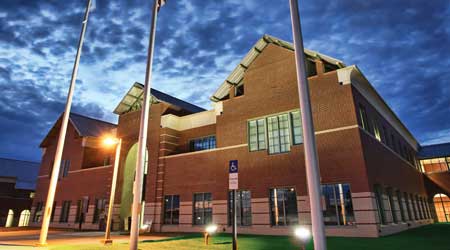 Tulsa Community College’s facilities department helped the college surpass a state initiative on energy efficiency.Tulsa Community College
Tulsa Community College’s facilities department helped the college surpass a state initiative on energy efficiency.Tulsa Community CollegeFinding Efficiency: College Searches Campuses for Energy Opportunities
A college-wide effort and a resourceful maintenance department were essential elements in achieving energy-efficiency success
The statewide energy efficiency initiative meant that despite having just completed a range of energy upgrades to key systems, the department would have to find additional projects and savings to meet the goal of reducing energy use by 20 percent. For help, Cox and his staff turned to the people working in the campus buildings.
“To create buy-in for the projects, department leadership went to each campus and solicited ideas and input on possible improvements,” he says. “Management used these ideas as a focal point for discussions within the department and, with a smaller steering committee, to discuss specific operational improvements.
“We vetted them through multiple criteria. One of them was student impact. Which project will have the most significant student impact for our campuses? Also, are there any safety-related factors that may elevate one project above another one? Then maintenance. How much time have we been dedicating toward this particular piece of equipment that maybe, from the life-cycle-cost perspective, the college would be better off replacing it? Our main goal through all of this was, ‘How can we create an environment where our students can thrive?’”
The department’s efforts also included close consultation with building engineering and maintenance staff, who were the most familiar with the facilities’ maintenance needs and opportunities for improved energy efficiency.
“Within the facilities group, first of all, we met a whole lot with facilities leadership staff and on the campuses with the building engineers and the maintenance supervisors,” Cox says. “We built the buy-in because they were the ones who were going to make it work.
“One of the best things that happened was that at one of these meetings, one of the building engineers said, ‘Let’s make some changes here and see what happens.’ We made the changes to the buildings, and three months later, we were experiencing a 15 percent reduction.”
“We had and continue to have tremendous support from our board and our president, and through their vision and leadership on this front, they recognized that while these performance contracts won’t solve our issues, they will point us in the right direction whereas we as a department could begin making improvements,” he says. “One of the biggest improvements that we made in phase 2 starting in 2014 and 2015 was substantial control upgrades. As a result of those upgrades, we were finally able to have better control of our setpoints, for example. It was a multi-pronged approach we used to gain control of our energy efficiency.”
Related Topics:














